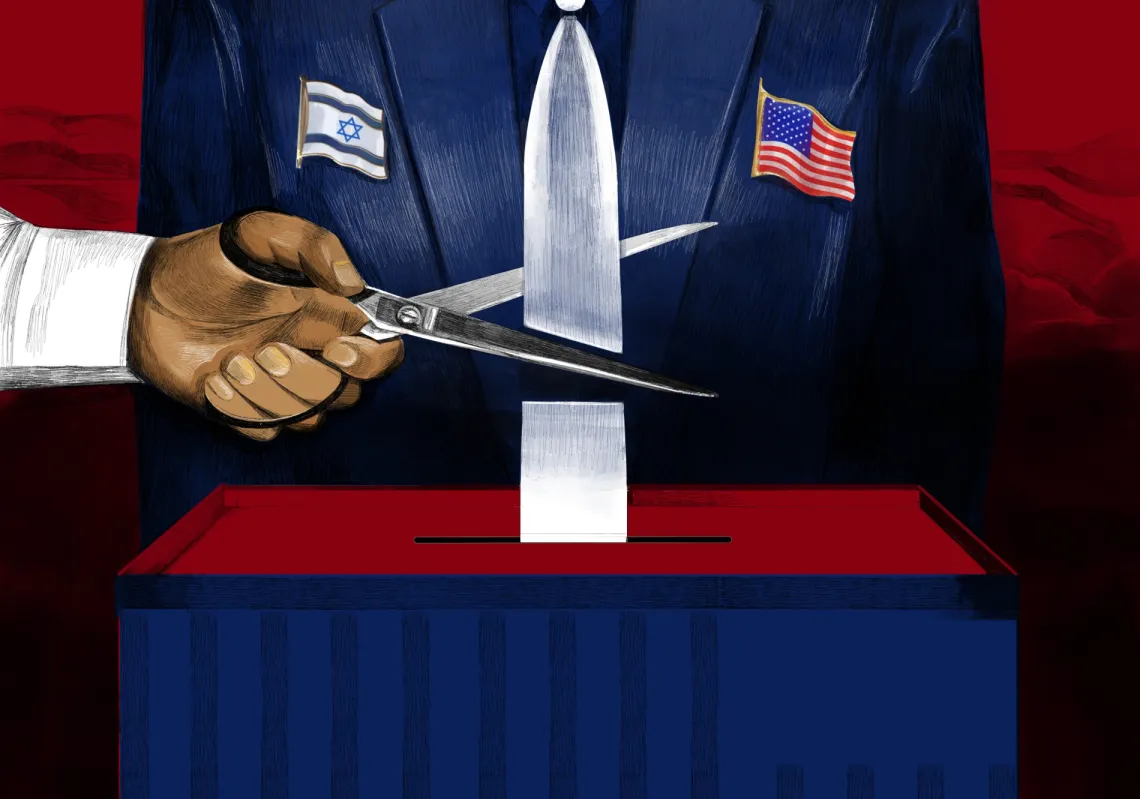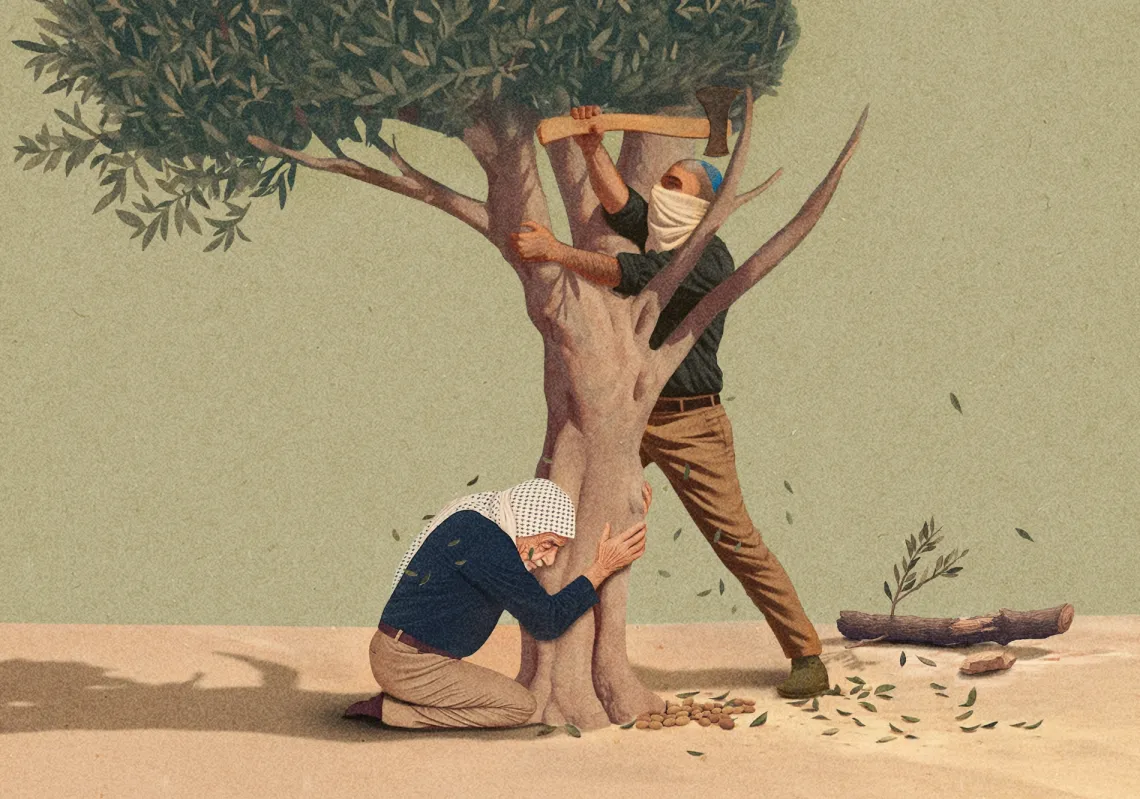 Local children and British band Jaffa, 1930s (credit: SOAS)[/caption]The exhibition ‘Britain in Palestine’ is currently showing at the Brunei Gallery at SOAS until 1 December. It offers a unique historical perspective that strives towards intellectual honesty on a topic that is often subject to polemic, extremely polarized stances, and emotional excess at the expense of reasoned dialogue.
Local children and British band Jaffa, 1930s (credit: SOAS)[/caption]The exhibition ‘Britain in Palestine’ is currently showing at the Brunei Gallery at SOAS until 1 December. It offers a unique historical perspective that strives towards intellectual honesty on a topic that is often subject to polemic, extremely polarized stances, and emotional excess at the expense of reasoned dialogue.
It succeeds for the most part, although—invariably on a subject as contested, vast, and prone to intellectual and political conflict—it has some flaws.
The exhibition sets out to “tell the story of what happened to Palestine and its people under the British mandate for Palestine. It will show how and why Britain got involved in Palestine, and the impact of British rule upon the country. Vivid and moving personal stories will portray the dilemmas of ordinary people caught up in the extraordinary circumstances of mandate-era Palestine featuring dramatic photographs, personal testimonies, important original documents, and poignant personal belongings that have survived from the time.”
Overall, it does this in a way that is historically accurate, analytical, and fair minded.
Still, there are some major omissions.
The exhibit only minimally addresses Jordan’s (or as it was originally called, Trans-Jordan’s) relationship to Palestine, neglecting to acknowledge that of which was originally included in the Balfour Declaration alongside Palestine as one entity, which was proposed to include a homeland for the Jewish people. Four fifths of that land was ultimately dedicated to the creation of an Arab state in Jordan, and Jews were barred from settling there.
[caption id="attachment_55235316" align="alignright" width="300"]
 British Palestine Policemen in Haifa, 1946-47.[/caption]
British Palestine Policemen in Haifa, 1946-47.[/caption]
There is a complex history of violent conflict as well as cooperation between the differing religious and ethnic communities of Palestine, but the exhibit largely focuses on the conflict.
More acknowledgment of the often peaceful day-to-day relations between the communities would have provided greater context and helped provide greater understanding of the interactions of the communities, which were not necessarily defined by conflict. However, conflict punctuated the years of British rule in Palestine.
Finally, the issue of the Holocaust and the fact that Britain effectively closed Palestine to Jewish immigration and thus sealed the fate of millions of European Jews who would be murdered in the Holocaust—by refusing to offer them even temporary refuge in Palestine—receives little attention.
The exhibit mentions it in passing, but the disastrous consequences for the Jews of Europe are barely alluded to: hundreds of thousands of innocent lives—possibly millions—could have been saved had Britain allowed Jewish immigration to Palestine (even only temporarily) and lifted the drastic restrictions it had issued in the 1939 White Paper that played a devastating role in sealing the fate of the European Jewry.
[inset_left]The exhibit is particularly strong in its depictions of the colonial conflicts that led to Britain’s mandate in Palestine.[/inset_left]
The exhibit is particularly strong in its depictions of the colonial conflicts that led to Britain’s mandate in Palestine, and to the way in which the Ottoman Empire, France, Britain, and Russia jockeyed for power and influence in the Middle East while paying lip service to the rights and welfare of local populations affected by these power struggles for political control and resources.
It states honestly and without caveat, “Under the British, Palestine was less democratic than it had been under Ottoman rule.” But it is careful not to romanticize Ottoman rule either, which also often impacted local populations in negative ways—requiring military service in Ottoman forces for men, for example.
The exhibition also sensitively depicts the plight of the local Palestinian Arab population, Jewish refugees escaping persecution in Europe, and orphaned children after World War I.
One particularly moving panel includes photos and descriptions of orphans being cared for at a Christian Jerusalem orphanage. They are all of different faiths and backgrounds but share the experiences of loss and suffering as a result of the War.
There are also fascinating letters, objects, and memorabilia from British soldiers, residents of Palestine, new immigrants, and family members of British doctors and missionaries who lived there.
A letter from a Jewish emigrant from Vilna to his parents reveals that many of the cultural differences that are still observed today between Jerusalem and Tel Aviv were already evident as early as 1929.
He wrote home, “You can’t at all imagine the frivolousness and impulsivity, hedonism and empty-headedness that pervades in Tel Aviv, Jerusalem seems to me in comparison so serious, dignified, and deliberate, and I like that.”
Of course the differences run deeper than that as well, with Tel Aviv being a more secular and liberal city, Jerusalem more religious and conservative, as well as ancient in comparison to Tel Aviv’s youthful vitality.
Images of Palestinian refugees, video testimonies, and objects from the homes to which many did not return convey the tremendous loss and displacement they suffered.
Unfortunately, the exhibition closes with a panel that detracts from much of the analytical rigor and accuracy that characterizes it. The panel refers to Arab armies "entering" Palestine, when in fact they had not entered it but declared war upon it and violated the UN partition agreements creating two states, one Jewish and one Arab in Palestine. This is not made clear.
It then states that “750,000 Arabs ended up in refugee camps following the 1948 war for Palestine, the Nakba.”
The Nakba refers to the catastrophe of this displacement, and the war is generally considered by Israelis to be a war of independence and self-defense against invading Arab armies who rejected the UN partition plan, as did most of the local Arab militias. Some acknowledgment of this is necessary to adequately depict both perspectives.
A more careful and accurate rendering of this final component of the exhibit would have maintained its otherwise nuanced and fair approach which includes a variety of voices and perspectives and consequently offers valuable insight into the history of Palestine under Britain.
This is a comprehensive and well crafted exhibition which will educate even those with a strong knowledge of the history and politics of the British rule of Palestine.
It also humanizes the diverse protagonists—perhaps one of the exhibit’s strongest elements.









